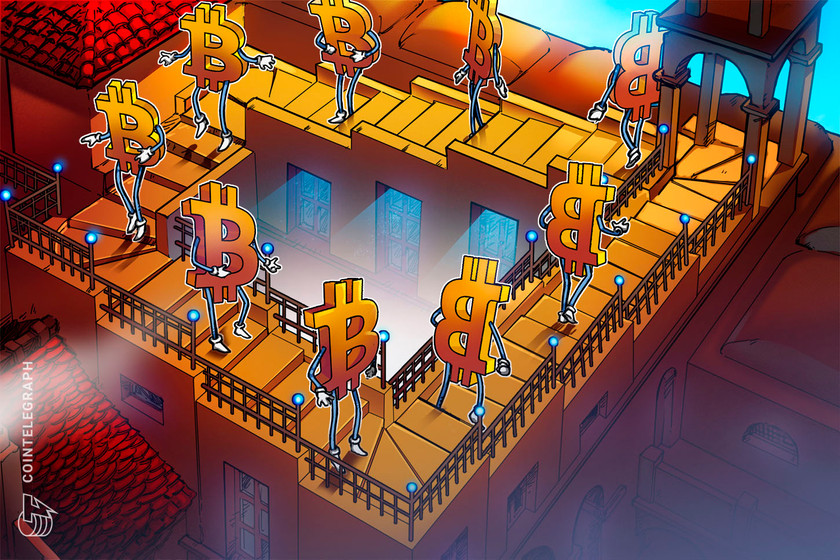Bitfinex Bitcoin longs hit a record-high, but does that mean BTC has bottomed?


A key derivatives metric used by margin traders has hit a record-high, but there’s plenty of risk and a catch to consider.
Bitcoin (BTC) has been unable to close above $32,000 for the past 28 days, frustrating bulls and pushing the Fear and Greed index to bearish levels below 10. Even with June 6’s small boost, the tech-heavy Nasdaq stock market index is down 24% year-to-date.
Investors who keep a close eye on regulatory development were possibly scared after New York state made clear its intention to regulate the crypto industry, including Bitcoin mining.
On June 2, New York Attorney General Attorney Letitia James issued an investor alert against “risky cryptocurrency investments,” citing the assets’ volatility. According to Cointelegraph, the attorney general is convinced that crypto investments create “more pain than gain” for investors.
The New York State Senate approved a proof-of-work (PoW) mining ban on June 2 and the proposed controversial bill aims to prohibit any new mining operations in the state for the next two years and is now headed for the governor’s desk.
Interestingly, as all of this takes place, Bitcoin derivatives traders have never been so bullish, according to one metric.
Margin traders are extremely bullish
Margin trading allows investors to leverage their positions by borrowing stablecoins and using the proceeds to buy more cryptocurrency. When those savvy traders borrow Bitcoin, they use the coins as collateral for shorts, meaning they are betting on a price decrease.
That is why some analysts monitor the total lending amounts of Bitcoin and stablecoins to gain insight into whether investors are leaning bullish or bearish. Interestingly, Bitfinex margin traders entered their highest ever leverage long (bull) position on June 6.


Bitfinex margin traders are known for creating position contracts of 20,000 BTC or higher in a very short time, indicating the participation of whales and large arbitrage desks.
Notice that the longs (bull) indicator vastly increased in mid-May and currently stands at 90,090 BTC contracts, its highest-ever registry. To understand how severe this movement was, one might compare it to the June–July 2021 previous all-time high of 54,500 BTC contracts in longs.
These traders hit the bullseye as their bullish positions peaked right as Bitcoin price bottomed. Over the subsequent months, they could sell those long (bull) contracts at a profit, reducing the number of open long positions (blue line).
Sometimes even whales get it wrong
One might assume that these whales and arbitrage desks trading at Bitfinex margin markets have better timing (or knowledge), and thus it makes sense to follow their steps. However, if we analyze the same metric for 2019 and 2020, a completely different scenario emerges.


There were three hikes in the number of Bitfinex BTC margin longs this time around. The first instance happened between mid-November and mid-December 2019 after the indicator jumped from 25,200 BTC to 47,600 BTC longs. However, over the next month, the Bitcoin price failed to break above $8,300 and these traders closed their positions with minimal gains.
The next wave of BTC longs took place in early-February 2020, but those traders were caught by surprise after the Bitcoin price failed to break $10,500, forcing them to close their margin positions at a considerable loss.
Bitfinex BTC margin longs increased from 22,100 to 35,700 contracts in late-July 2020. The movement coincided with the price rally to $47,000, so the early entrants might have scored some profit, but most of the investors exited their margin longs with no gains.
Clever margin longs might be right 75% the time, but there’s a catch
To put things in perspective, over the previous four instances where BTC margin longs (bulls) significantly increased, investors had one profitable trade, two that were mostly neutral and one considerable loss.
Some might say odds still favor those tracking the indicator, but one must remember that whales and arbitrage desks could easily crash the market when closing their positions. In such cases, those following the strategy might arrive late to the party and come out at a loss.
Will the current Bitfinex margin longs increase result in extreme profits? It might depend on how traditional markets, mainly tech stocks, perform over the next couple of weeks.
The views and opinions expressed here are solely those of the author and do not necessarily reflect the views of Cointelegraph. Every investment and trading move involves risk. You should conduct your own research when making a decision.






























































